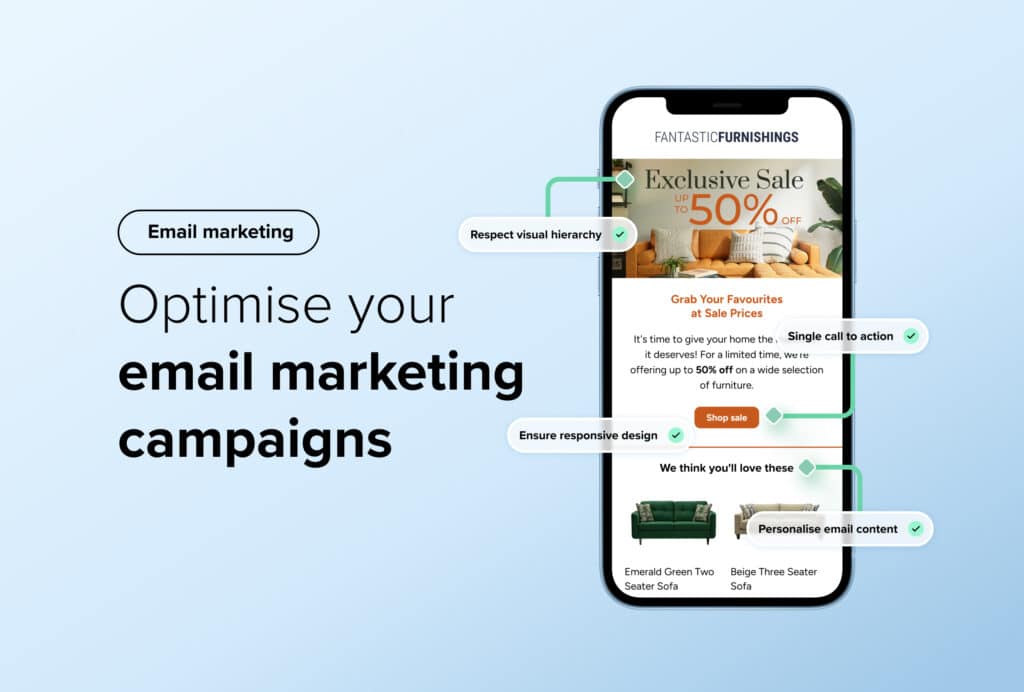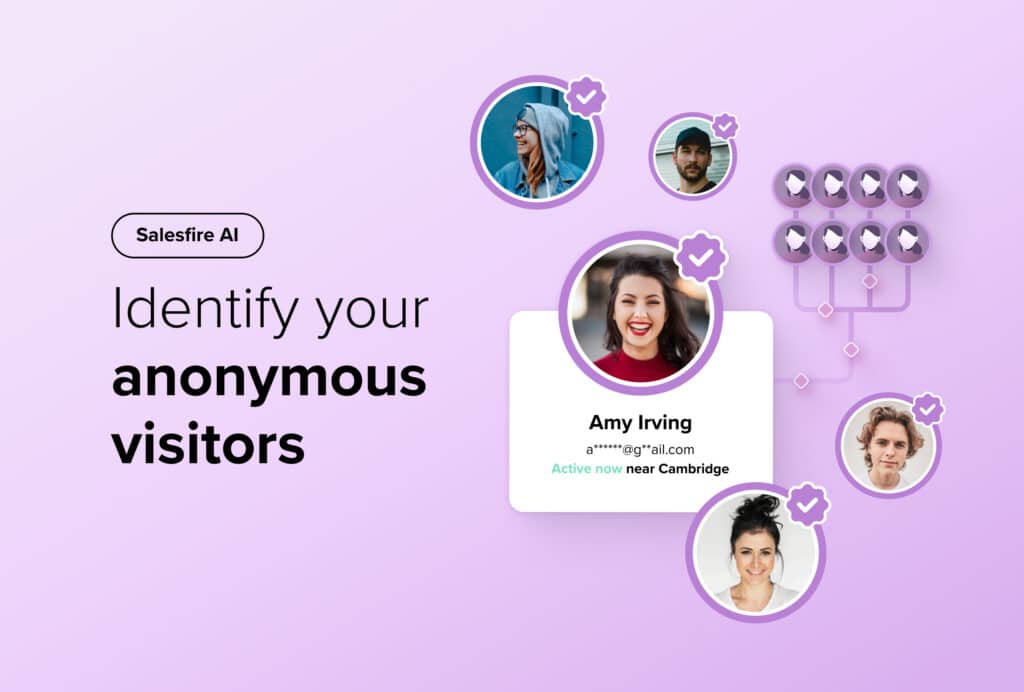eCommerce Personalisation: What It Is and How It Engages Customers
By Bethany Llewellyn • Last updated: Monday Apr 22nd, 2024
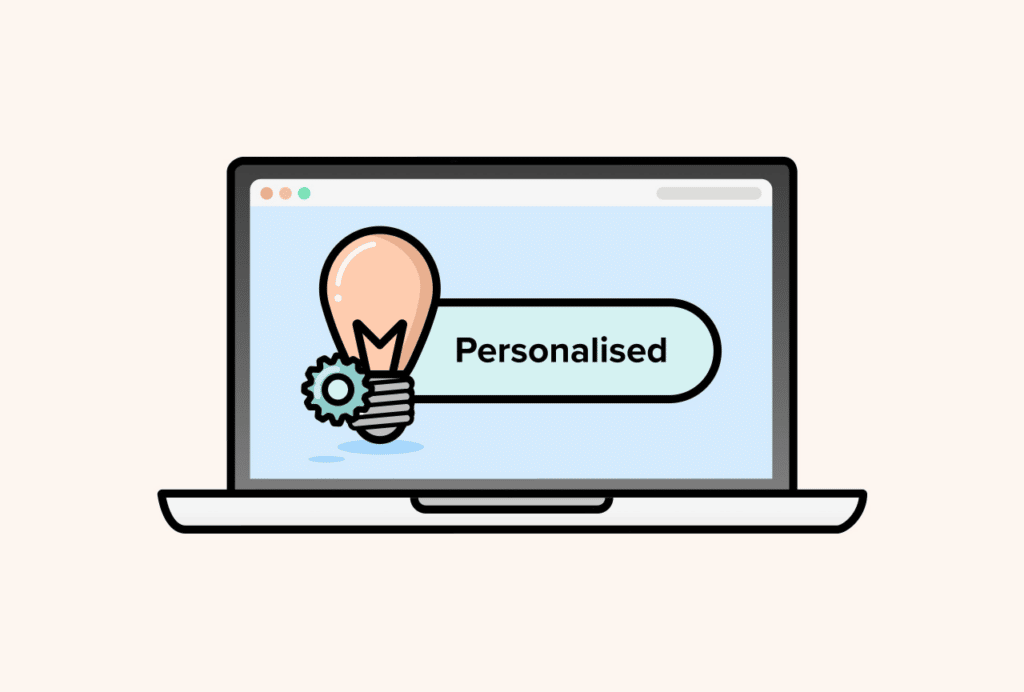
Is your eCommerce business missing out on conversions? That may be because your team isn’t channelling its efforts into personalisation.
After all, 74% of customers feel frustrated when website content isn’t personalised.
Getting eCommerce personalisation right is crucial to improving your conversion rate and generating loyalty in a crowded eCommerce space.
What is eCommerce personalisation?
eCommerce personalisation is a customer-centric marketing strategy that showcases products or services to potential customers based on the data you have collected about their digital presence.
It’s about creating a customer journey optimised with tailored content and messaging to attract and retain valuable traffic. In return, you will see improved customer loyalty and improved conversion rate optimisation.
The first impression counts. Users will form an opinion about your site in a matter of seconds that will determine their purchasing decision, so you must offer a user experience that directly appeals to them from the get-go.
Research from Accenture shows that 83% of customers are willing to share their data for a more personalised on-site experience. With this in mind, retailers should capitalise on the desire for a personalised shopping journey to set them apart from competitors.
However, personalisation is an umbrella term. The level of personalisation you provide to your customers is determined by the type and the amount of data you collect. This could include:
- Previous purchases
- How they came across your site
- Browsing behaviour
- Products viewed
- Time spent on product pages
- Demographic information e.g. location
With information like this, you’re able to segment your audience to deliver content, products, and messages you know they’re going to be receptive to.
This will help you to provide an elevated shopping experience that engages customers and ensures they’re going to return.
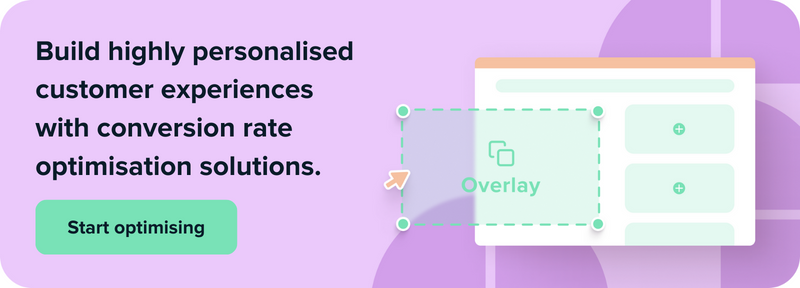
5 eCommerce personalisation strategies to try
By enhancing customer experiences with intelligent personalisation strategies, you will start to see an influx of engaged users, whether they’re returning customers or first-time site visitors.
In time, this will result in a more engaged audience who can advocate for your brand to their family and friends, helping you expand your customer base and increase sales.
With varying customer expectations throughout the different eCommerce industries, tailoring personalisation strategies to your business goals and objectives is key.
1. Drive traffic with targeted advertising campaigns
Generating traffic is one thing, but it carries less weight than traffic generated through personalisation.
Using the data you’ve collected from your customers will make it easier to identify your target market, ensuring you reach the right audience through ads.
Dynamic retargeting campaigns can also drive traffic back to your website with tailored messaging based on customer interest and behaviour to encourage them to pick up where they left off.
To take it a step further, you can create personalised dynamic landing pages based on PPC ads, and dynamic text replacement to match specific keyword searches or geographic locations.
This will instantly engage first-time visitors who land on your site from other platforms and provide the perfect prompt to encourage them to sign up for a newsletter or to showcase your latest products.
The most important platform to advertise on? Social media. With almost 3 billion active social media users, it’s crucial to focus ad spend on it, especially with the upcoming tech-savvy Generation Z.
Since your social media following can contain some of your most engaged customers, it’s the perfect place to showcase your brand personality while directing them through to your online store.
The more your customers become engaged with your brand through social media, the easier it will be to direct them to your website to complete a purchase.
2. Personalised retargeting email campaigns
Email marketing proves to be one of the most effective and cost-efficient ways to promote your brand — after all, email drives an average ROI of 36% for every dollar spent, higher than all other marketing channels. Best of all, it’s easier than ever to personalise.
It’s a way to strategically and systematically approach your users based on where in the buying journey they are.
There are a variety of email campaigns you could incorporate into your email marketing strategy, to name a few:
- A welcome series: Start as you mean to go on with personalised welcome emails that address the customer and contain content tailored to their browsing history.
- Nurture emails: Keep in touch with your customers with discounts, offers and content that’s relevant to their purchase history.
- Basket abandonment emails: Recover lost sales with emails that send a user’s basket straight to their inbox to encourage them to complete a purchase.
- Re-engagement emails: If a shopper hasn’t visited or purchased from you in a while, deliver a re-engagement email that attempts to entice them back with a unique discount or personalised recommendation.
- Newsletter series: New season launch? New product category? Sale now on? Let your most engaged customers know with a periodic newsletter send that keeps them in the loop and offers exclusive insights, articles or previews to make them feel valued.
All of the above work with specific targets in mind to engage your users and ultimately divert them back to your site to complete a purchase.
Whether you want to personalise your emails with the customer’s name or remind them of their abandoned basket, it’s a great way to strengthen your relationship with your customers.
3. Deliver the right message at the right time
Behavioural marketing happens when you recognise consumer behaviour on your website and personalise based on that action.
Targeting the right customer with the right message is one of the most effective ways to optimise your campaigns and achieve a higher ROI.
With automated marketing campaigns, such as those delivered through Digital Assistant, you can surface messaging based on a user’s position in the sales funnel at just the right moment.
If a user is new to your site, greet them as such with welcome messages, product suggestions, or information on your USPs. If they have items in their basket they’re about to abandon, secure the sale with a discount code triggered on exit intent.
You can even help customers pick up where they left off by displaying their recently viewed items on their return to your site. Further messaging campaigns to consider are:
- Newsletter sign-ups: Target shoppers higher up the funnel to build a high-quality subscriber base that you can retarget to secure future sales.
- Delivery and returns information: If a shopper is displaying hesitancy on a purchase, reassure them with information on your shipping and returns policies.
- Dynamic basket value: Alert customers to the amount they need to add to their baskets to qualify for free shipping and increase your AOV.
- Reviews: Reassure shoppers, utilise social proof and build your reputation as a trustworthy retailer by displaying reviews based on how a customer interacts with your site.
By creating a unique, hyper-personalised experience based on the way shoppers interact with your website you will engage users and increase sales.
4. Transform customer journeys with AI-driven product recommendations
Artificial intelligence has the power to transform customer journeys and provide the intuitive experience your customers are looking for.
Research from Accenture shows that customers want to purchase from companies that:
- Know them by name
- Remember their browsing history
- Offer relevant recommendations
With tools like AI-powered product recommendations, you can analyse buyer behaviour to anticipate customers’ wants and needs and simplify the product discovery experience.
This works by matching up a user’s customer journey with those who had similar buying behaviours to ensure each customer receives product recommendations that will really resonate with them.
Through progressive learning algorithms, AI will adjust to each customer and their preferences to amplify customer segmentation and create more targeted campaigns.
This will help to prevent a poor customer experience and treat users like individuals, not numbers.
It presents the perfect opportunity to upsell and cross-sell to your visitors, and increase your average order value in the process — a win-win.
What’s more, AI will free up your resources. Automated recommendations remove the tedious, time-consuming data tracking and tagging tasks for eCommerce marketing managers.
Things to consider: A user’s past purchase may have been a gift for others and not an item for themselves, so using AI-powered algorithms can help by suggesting a collection of relevant products for these users.
5. Create hyper-personalised search experiences
Removing friction to create a seamless journey to purchase is crucial for retailers in all sectors.
The key to this is ensuring that you’re delivering a simple yet accurate product discovery experience.
Particularly important for those retailers with a large product catalogue, using a visual search tool will empower your customers to search for and discover the products they want, how they want to.
Shoppers are increasingly getting inspiration from social media, so veering towards visuals on your site will allow you to replicate the product discovery process they’re experiencing on other platforms.
By uploading images taken from social media to use as search queries, you can return hyper-personalised results that will lead a shopper to their perfect purchase.
Pro tip: If you’re looking to implement a visual search tool that’s easy to use and quick to integrate into your site, book a demo for our Visually Similar Search tool.
Salesfire makes personalisation second nature
Personalisation provides a better experience for consumers and ensures business growth for retailers.1
For advice on the next steps, here’s a summary of the key takeaways covered in this article:
- Personalise your content: Make your customers feel valued by providing a truly tailored experience with relevant content such as ‘Recently Viewed’ Product Recommendations.
- Utilise data-driven insights: Analyse buyer behaviour to improve anticipation and simplify the product discovery experience through tools like AI-powered Visually Similar Search.
- Optimise your future campaigns: Utilise eCommerce platforms like TrendDesk to review consumer behaviour, predict optimal dates for product launches and inform future marketing campaigns.
- Focus on customer retention: Optimise the on-site experience for your customers and remove friction for shoppers, leaving your customers satisfied and driving repeat purchases.
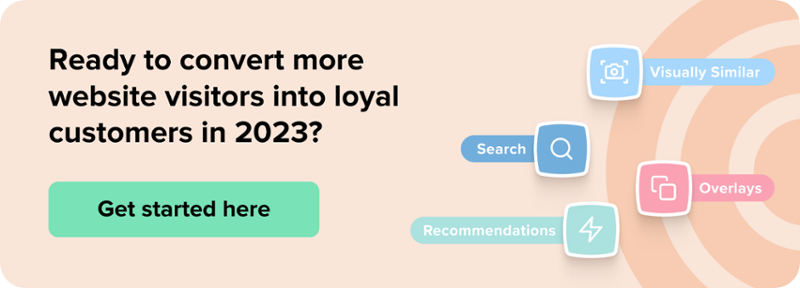
See how Salesfire can help you optimise your product discovery experience, email one of our experts at enquiries@salesfire.com or book a free demo of our personalisation tools.

